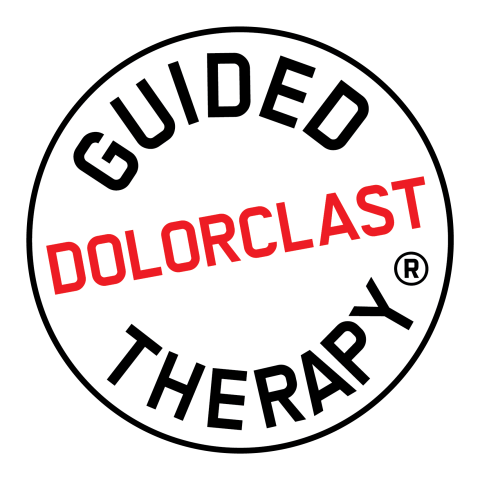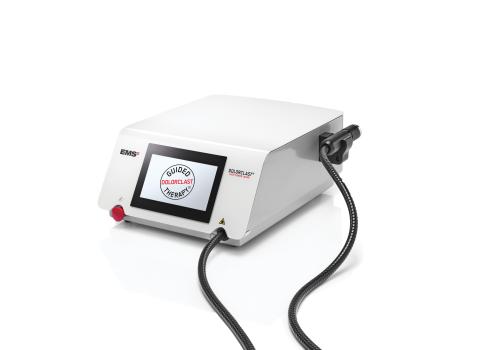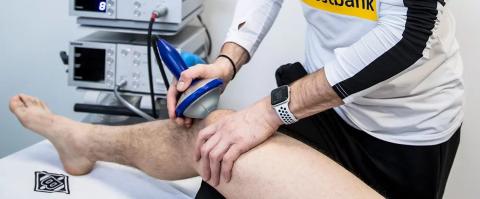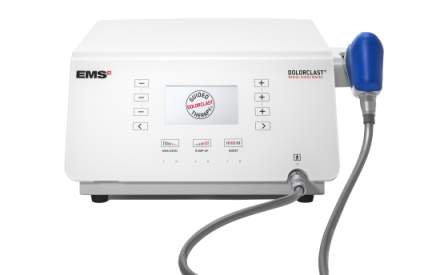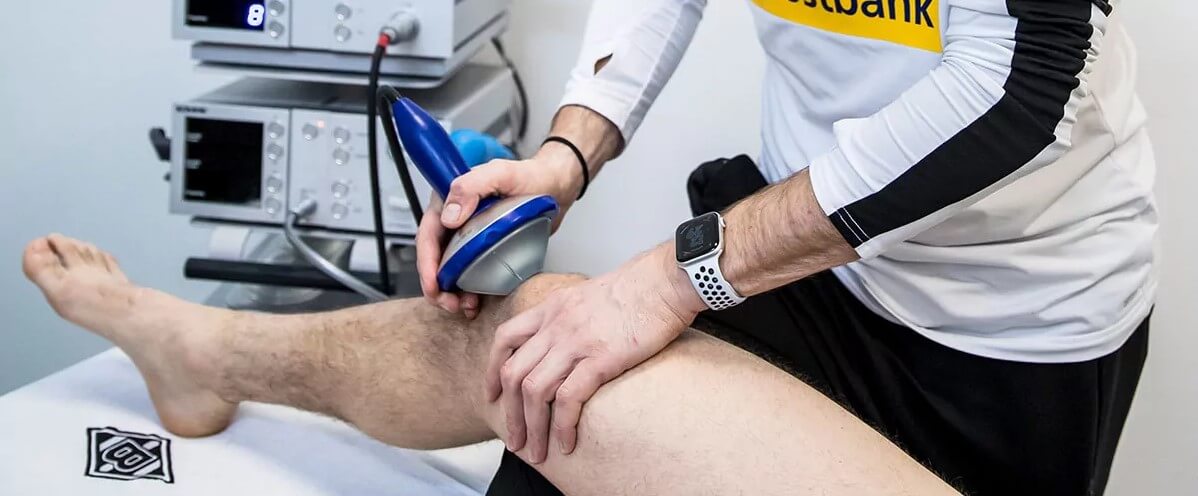
Laser and shock waves - a winning combination therapy approach for Patella Tip Syndrom
High power laser and shock wave therapy in professional sports
When you work in the medical department of a professional football team, return to sport is a key indicator for treatment success. Returning sooner to training or competition can make a huge difference in an athlete's career. Pressure for accelerated thorough healing is immense, as relapse can have devastating effects on a single patient and the success of the whole team. Therefore, advanced medical technologies such as High Power Laser Therapy associated with or without Shock Wave Therapy are used in many professional sports teams to ensure effective, fast and safe healing.
Wouldn't it be great, if non-athletes could also benefit from these advanced treatment approaches in professional sports? How can they be applied in regular, every-day physiotherapy and rehabilitation? Within this post, we will explore how the new therapeutical concept from EMS, the Guided DolorClast® Therapy, can bring unrivalled performances for best treatment outcome to every practice.
A recent case study publication in the German sports medicine network "Sportärztezeitung" highlighted an effective use of a combination of different instrumental therapies within a thorough treatment procedure. (Link, the article is only available in German). This post examines the treatment approach following the 6 steps of the Guided DolorClast® Therapy.

The material for this post was provided by the courtesy of Sportärztezeitung. Click here for more information.
Assess & Engage
Care should always be taken to tailor the therapy well to the individual characteristics of the patient - especially the skin type when a laser therapy is involved and the often day-dependent pain tolerance as well as the development of the symptoms in the course of treatment should always be taken into account.
It is important to note that although laser and shock wave treatment leads to early relief of symptoms, it alone does not usually lead to permanent recovery. Here, as with any pathology, it is important to identify the biomechanical and local causes. In functional diagnostics, among other things, attention should be paid to this, see diagram to the right.
There should always be a functional active and passive examination of the affected region and the musculoskeletal system as a whole. Knowledge of manual therapy is essential.
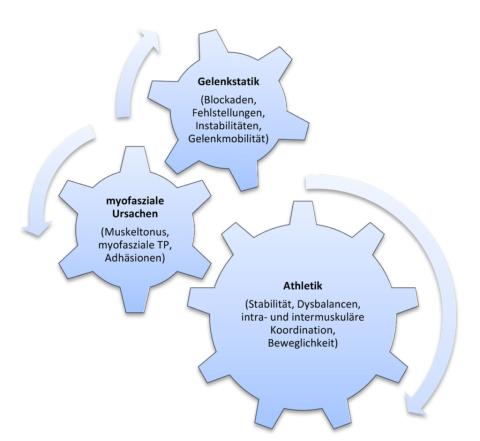
After conducting a thorough anamnesis with a patient, GDT recommends to assess the pain level and the Range of Motion with key metrics as objective endpoints. These should be tracked throughout the whole treatment protocol and presented regularly to the patient.
To determine the next steps, the chronicity of the pathology is important:
- <1 month acute pain: DolorClast® High Power Laser only
- > 1month sub acute or chronic pain: DolorClast® High Power Laser + DolorClast® Shock Waves
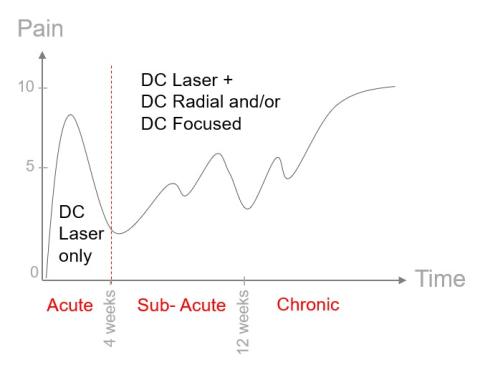
DolorClast® High Power Laser
In the case of symptoms in the area of the patellar tip a therapy area of approx. 7 x 5 cm should be selected for the high energy laser, which is dynamically treated with a power of approx. 100 joules per cm², which corresponds to a total power of 3500 joules. Of course, both the area and the amount of energy applied must be individually adapted to the respective case and also varied during the course of treatment if necessary.
Dr. med. Doyscher gives a few practical tipps:
- Due to the rapid analgesic effect, laser treatment should not be carried out immediately before intensive training sessions, as the pain relief may overload the damaged structure and cause injury.
- Wear protective goggles, use in lockable rooms and warnings: high-energy lasers can cause serious eye injuries.
- Some therapeutic lasers have a strong thermal effect - pay attention to the temperature and duration, otherwise burns may occur. This is different for the new DolorClast® High Power Laser - see below
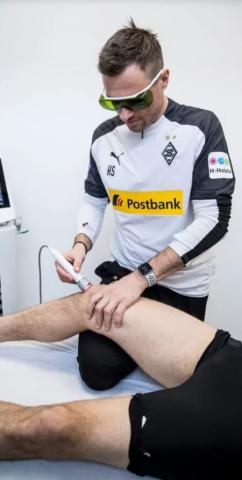
What are the benefits of the new DolorClast® High Power Laser?
EMS has recently launched a new high power laser, different to what was available at the time of the case study. Here are the key benefits:
-
Fast and powerful antalgic effect within 5 min after treatment
-
Fast reduction of acute inflammations from the 1st treatment session on
-
No heat effect": DolorClast deploys spaced pulses of very high peak power. This brings more energy into the tissue, but with a reduced risk of burns.
- Action mode: "Hypersensitive patients" to further avoid the risk of burns in certain patient groups
DolorClast® Radial Shock Waves
Laser therapy in combination with radial and focused shock waves is an effective combination in sports physiotherapy, often leading to a rapid reduction of pain in the early stages of therapy.
In the following indications, Dr. med. Doyscher has observed rapid positive results with a combination of high-energy laser and focused shock wave:
- Achillodynia (also and especially insertional forms)
- Epicondylopathy of the elbow (medial and lateral)
- Patellar tip syndrome
- Tractusilliotibialis syndrome
- Irritation of the bisceps femoris tendon
- Myofascial trigger points
- Muscle injuries
DolorClast® Radial Shock Waves offers unrivalled performances ensuring best clinical outcomes, now available in a portable device.
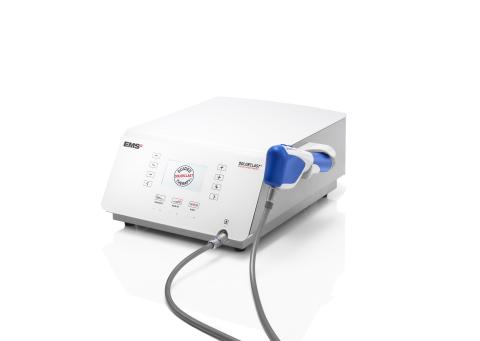
Rehabilitation
The combination of early passive treatment options, such as laser and shock wave in this case, with an individually tailored active training programme - eccentric exercise, trunk stabilisation training, mobilisation etc. - is most effective.
According to Dr. med. Doyscher, a symptomatic therapy alone does not replace manual therapeutic and/or osteopathic treatments and targeted functional training to eliminate the dysfunctional chains and the often distally located cause(s)!
Therefore, GDT suggests a set of exercises and rehabilition routines that are complementary to the instrumental therapy. Numerous studies proved that combining rehabilitation exercises with shock waves provides better outcome compared to each treatments taken separately.
Follow-up
Patient compliance to treatments that last over few weeks is tricky. An essential part of GDT is therefore to provide advice on keeping patients within a practice and improving the overall practice success.
What is evident for professional athletes shouldn't be missed for regular patients: By using outcome measurement tools any practitioner can track treatment success, prove the efficiency of your approach.and reassure patients that they have made the right choice. GDT works with ROM and VAS scales that should be regulary presented before and after each treatment to the patient. This allows for continuous communication between practitioner and patient and keeps the latter engaged for the greatest treatment succes.
